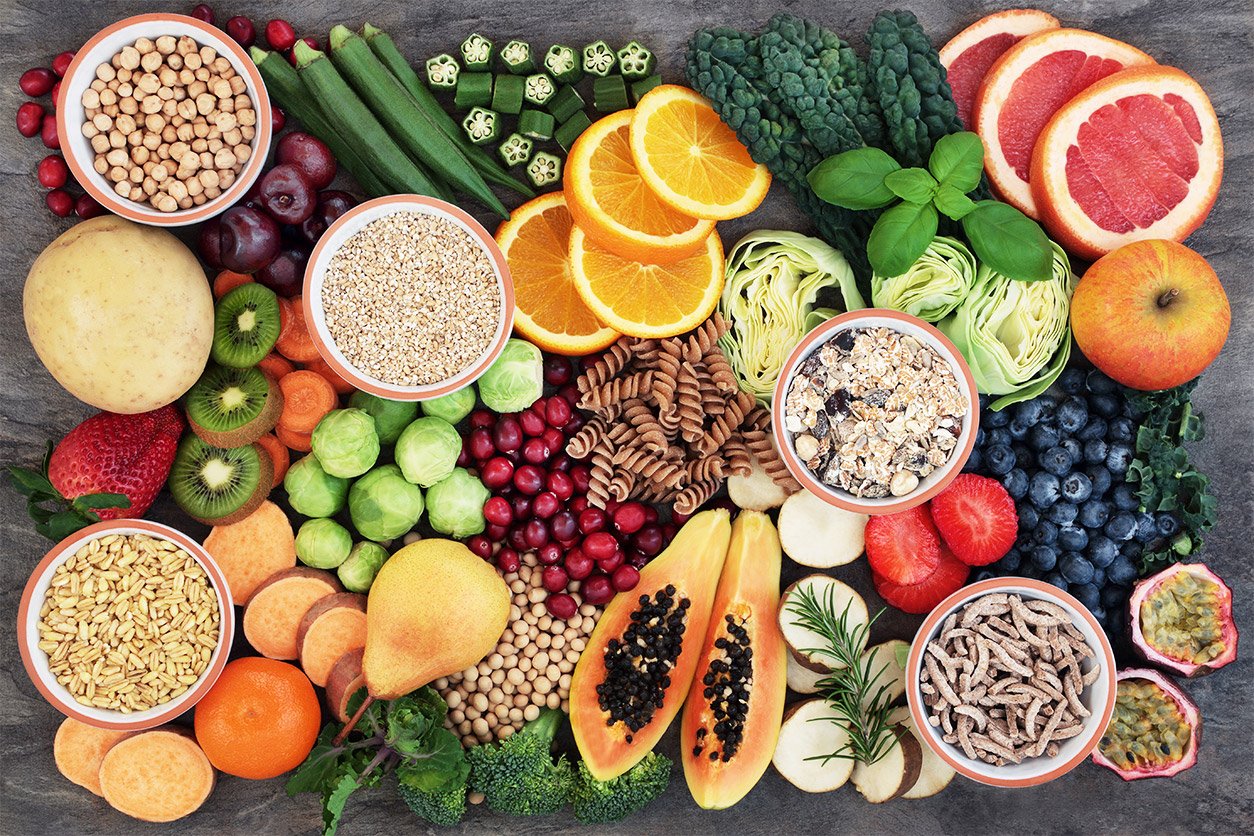
Key facts
- Fibre is a type of nutrient that reduces your risk of disease and keeps your digestive system healthy.
- There are several types of fibre that can be found in different foods.
- Including a variety of fresh foods in your diet will ensure you get enough fibre.
High-fibre foods and diet
What is fibre?
Fibre is a nutrient that is needed by your body to keep you healthy. It’s digested by the bacteria in your gut to produce substances that keep you healthy.
Eating a diet high in fibre and wholegrain foods is linked to a lower risk of:
- obesity
- type 2 diabetes
- heart disease
- lower cholesterol
- bowel cancer
- diverticular disease
- constipation
- haemorrhoids
Because high-fibre foods help fill you up, they tend to make you eat less and help you keep a healthy weight.
What foods contain fibre?
There are several types of fibre including:
- soluble fibre
- insoluble fibre
- resistant starch
Because they have different health benefits, it’s important to include these in your diet.
Soluble fibre
Soluble fibre is a type of fibre that dissolves in water. It’s found in foods such as:
- oats
- legumes (split peas, dried beans such as red kidney beans, baked beans and lentils)
- fruit
- vegetables
- seeds and nuts
- breads, cereals and pasta
Foods high in this type of fibre can help you feel full. They also help reduce constipation by speeding up the time it takes for faeces (poo) to pass through your body.
Some soluble fibre can reduce the amount of cholesterol absorbed from your small intestine. This can be found in:
- fruit
- oats
- barley
- psyllium
Soluble fibre can also help to lower your blood cholesterol levels when eaten as part of a diet that is also low in saturated fat.
Soluble fibre can also help to stabilise your blood glucose level if you have diabetes.
Insoluble fibre
Insoluble fibre is a type of fibre that doesn’t dissolve in water. It’s found in:
- high-fibre and whole grain breads and cereals
- the outer skins of fruit and vegetables
- nuts and seeds
Because insoluble fibre absorbs water, it helps to soften the contents of your bowel, and keep your bowel movements (poos) regular. This helps to prevent constipation.
Resistant starch
Resistant starch is another type of carbohydrate that isn’t easily absorbed. Different ways of cooking can create different amounts of resistant starch. For example, resistant starch is found in:
- slightly undercooked (‘al dente’) pasta
- cooked but cooled potatoes (including potato salad) pasta and rice
- under-ripe bananas
- beans
- lentils
In general, foods that are less highly processed contain more resistant starch.
An important benefit of resistant starch is that it ferments. Fermenting produces substances that help to keep the lining of your bowel healthy.
How much fibre do I need?
In Australia, the recommended daily intake of dietary fibre is:
- 25g for women
- 30g for men
Most Australians eat less than this.
It’s important to include different types of fibre in your diet, from a variety of plant foods. To get enough fibre every day, Cancer Council Australia recommends that you should eat:
- a variety of wholegrain or wholemeal foods
- at least 2 serves of fruit daily
- at least 5 serves of vegetables daily including legumes (also known as ‘pulses’)
The Australian Dietary Guidelines provide the following guidelines for servings each day:
- children aged 2 to 18 years should have 4 — 7 serves of wholegrain foods
- pregnant people should have 8 — 9 serves of wholegrain foods
- adults aged 19 to 50 years should have 6 serves of wholegrain foods
- males aged over 51 years should have 4.5 — 6 serves of wholegrain foods
- females aged over 51 years should have 3 — 4 serves of wholegrain foods
It may seem difficult to get enough serves of wholegrain foods every day. Try to eat wholegrain or wholemeal varieties for half of your daily serves of bread and cereals. A serve of wholegrain or wholemeal foods is equal to:
- 1 slice of wholegrain bread or 1/2 a medium wholemeal bread roll
- 1/2 a cup of cooked brown rice, pasta, noodles, or cooked porridge
- 2/3 cups of wholegrain breakfast cereal
- 1/4 cup of untoasted muesli
The combination of nutrients in food work together to produce health benefits. So, it’s better to have wholefoods, rather than dietary fibre supplements.
Tips for including more fibre in your diet
- Enjoy wholegrain, wholemeal or mixed grain toast instead of white varieties.
- Use wholemeal pasta instead of white pasta.
- Try brown rice or quinoa instead of white rice with casseroles or curries.
- Use wholemeal flour to thicken sauces, gravies and stews.
- Try wholegrain, seeded or wholemeal crisp breads with vegetable-based dips.
- Know which packaged foods are high in fibre by reading the nutrient panel on the pack.
Dietary fibre absorbs fluid so it’s important to drink enough liquid, including water.
Can I have too much fibre?
The more fibre we eat, the more flatulence (wind) we produce. While it can be a little embarrassing, this is normal and fibre is still good for your health.



